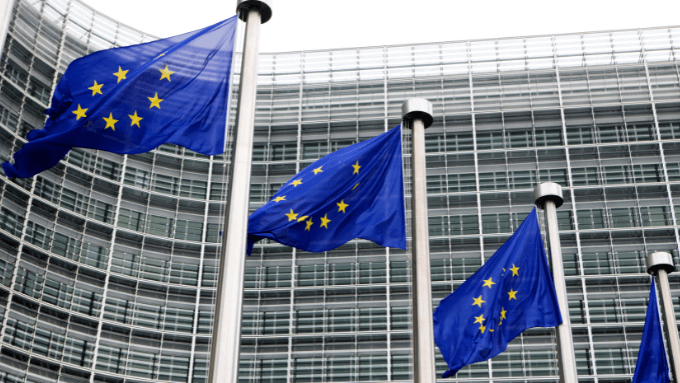Destruction of Personal Data
Introduction
The Regulation on Deletion, Removal and Anonymization of Personal Data ("Regulation")[1] was published in the Official Gazette dated 28.10.2017 and numbered 30224. The Regulation, which determines the procedures and principles regarding the deletion, removal or anonymization of personal data, in other words, destruction of personal data, will enter into force on 01.01.2018. In addition to the Regulation, in order to clarify the application of how to perform deletion, removal or anonymization in the Regulation, the Guideline for Deletion, Removal or Anonymization of Personal Data ("Guideline")[2] issued by the Personal Data Protection Authority.
The Guideline which clarifies the application of the Regulation and the Regulation which is prepared in accordance with Law No. 6698 on Protection of Personal Data ("Law No. 6698") are briefly covered in this article.
Deletion, Removal or Anonymization of Personal Data
Primarily, the deletion, removal or anonymization of personal data are regulated under Art. 7 of Law No. 6698. In accordance with this relevant article, personal data shall be deleted, removed or anonymized by the data controller upon request of the relevant person when the "reasons for processing are eliminated," despite the fact that it has been processed in accordance with the provisions of Law No. 6698 and other related laws.
The deletion, removal and anonymization of personal data are clarified in the Regulation and Guideline, and these cases are separately explained, below.
Deletion of Personal Data
As per the Regulation, the deletion of personal data is the process of rendering personal data inaccessible and irrevocable for relevant users. The data controller is liable to take all necessary technical and administrative precautions for the deleted personal data to be inaccessible and reusable for the users concerned.
Since personal data can be stored in various recording media, they must be deleted appropriately to all related recording media. For example, in the cloud environment (such as Office 365, Salesforce, Dropbox) the data must be deleted with the delete command. It is important to take into consideration that the user is not authorized to restore deleted data on the cloud system when the operation is being performed. Personal data stored in the paper environment should be erased using the blanking method.
Blanking is performed by deleting personal data on relevant paper where possible, and in cases where this is not possible, it can be rendered invisible to the relevant user by using fixed ink so that it cannot be reversed and read by technological solutions. For office files located on the central server, the file must be deleted with the delete command in the operating system, or the access right of the user must be removed on the file or on the directory/index where the file is located. Personal data in flash-based storage media must be stored cryptically and deleted by using appropriate software for these media. Moreover, the corresponding rows in which personal data are stored must be deleted with database commands (Delete, etc.). It is worth noting that the user is not a database administrator at the same time the operation is being performed.
Removal of Personal Data
Pursuant to the Regulation, the removal of personal data is the process of rendering personal data inaccessible, irretrievable and irrevocable by anyone. The data controller is obliged to take all necessary technical and administrative measures regarding the removal of personal data.
For the removal of personal data, all copies of the data should be identified and then removed individually depending on the systems where data is located (such as local systems, environmental systems, paper and microfiche, and cloud environment). In order to remove data on local systems, the methods of de-magnetizing, physically removing (such as dissolving, burning or dusting optical and magnetic media) and overwriting data can be used. In environmental systems, methods of removal that can be used in connection with various media types are discussed in detail in the Guideline.
Since the personal data in paper and microfiche are permanently and physically written on the media, the master media must be removed. During this process, it is necessary to divide the media into small pieces with paper removal or shredding machines so that it cannot be combined back and forth and, if possible, horizontally and vertically, in incomprehensible sizes. Personal data transferred from paper format to electronic media by scanning should be removed by using one or more methods, such as de-magnetizing, physically removing, and overwriting according to the electronic media in which they are stored.
During storage and use of personal data in the cloud environment, cryptographic methods and individual encryption keys must be used wherever possible, especially for each served cloud solution. When cloud computing service relationship ends, all copies of the encryption keys required to make personal data available must be removed. Additionally, the methods of removing personal data contained in malfunctioning devices, or for the devices taken to maintenance, are also listed in the Guideline.
Anonymization of Personal Data
According to the Regulation, anonymization of personal data renders personal data useless to be associated with a specific or identifiable real person in any way, even if the personal data is matched with other data. The data controller is obliged to take all necessary technical and administrative measures concerning the anonymization of personal data.
Anonymization is the removal of the identity of the relevant person, by removing or changing all direct and / or indirect identifiers in a dataset, or the loss of the ability to be distinguished within a group or crowd, so that it cannot be associated with a real person. Any data that does not point to a particular person as a result of blocking or losing these properties is considered to be anonymous data.
The goal of anonymizing is to break the link between the data and the person identified by that data. The methods of anonymizing are carried out by methods such as automatic or non-automatic grouping, masking, derivation, generalization, and randomization applied to records in the data recording system. As a result of applying these methods, the obtained data must not be able to identify a specific person.
There are many ways of anonymizing personal data. The data controller decides which of these methods to apply by taking into account the data at hand. With respect to the data set owned when applying anonymization methods, it is important to consider data characteristics, such as the nature of the data, its size, the structure of the physical environment, its diversity, and the purpose of processing the data.
Storage and Destruction Policy of Personal Data
Pursuant to Article 16 of Law No. 6698, the data controllers who are responsible for being registered with the Data Controllers Register are obliged to prepare a personal data storage and destruction policy in accordance with the personal data processing inventory. The data controller’s preparing a policy of personal data storage and destruction does not mean that personal data has been stored, deleted, removed or made anonymous in accordance with Law No. 6698 and Regulation. Furthermore, the liability of storing, deleting, removing or anonymizing personal data in accordance with Law No. 6698 and Regulation of the data holders who are not under the obligation to prepare personal data storage and destruction policies shall continue.
The data controller is responsible for disclosing the methods used for the deletion, removal and anonymization of personal data in its relevant policies and procedures. The policy of personal data storage and destruction is composed of the following, at the very least: The purpose of the preparation of the policy, the recording media regulated by the personal data storage and destruction policy, the definitions of the legal and technical terms included in the policy, the explanation on legal, technical or other reasons that require the storage and destruction of personal data, technical and administrative measures taken for the safekeeping of personal data, and preventing illegal process and access of personal data, technical and administrative measures taken to ensure that personal data are destroyed in accordance with law, titles, units and job descriptions of persons involved in the storage and destruction of personal data, tables showing storage and destruction periods, periodic destruction periods, if the data has been updated in the existing personal data storage and destruction policy, and any information as to such change.
All transactions relating to the deletion, removal and anonymization of personal data shall be recorded and shall be retained for at least three years, excluding any other legal obligations.
Duration of the Destruction of Personal Data
The data controller who has prepared the personal data storage and destruction policy is obliged to delete, remove, or anonymize personal data in the first periodic destruction following the date upon which the obligation to delete, remove or anonymize personal data occurs. The period of time during which periodic improvement is carried out shall be determined and observed by the data controller in the policy of personal data storage and destruction. This period cannot exceed six months at any time. If the data controller does not have an obligation to prepare a personal data storage and destruction policy, it is obliged to delete, remove or anonymize personal data within three months from the date upon which the obligation to delete, remove or anonymize personal data occurs.
The real person whose personal data is processed may apply to the data controller and request that his/her personal data be deleted or removed. In this case, if all of the personal data processing conditions are eliminated, the data controller deletes, removes or anonymizes the personal data in question. The data controller concludes such request of the relevant person within thirty days at the latest, and informs her/him accordingly. If all conditions of the personal data processing have been eliminated and the personal data in question has been transferred to a third party, the data controller shall notify the third party, and the third party shall carry out the necessary procedures within the scope of the Regulation. If all the conditions of personal data processing have not yet been eliminated, this request may be rejected for reasons, and the relevant person shall be notified of the rejection notice in writing or electronically within thirty days, at the latest.
Conclusion
The Regulation, which sets out the principles and procedures for the deletion, removal or anonymization of personal data, and the Guideline prepared for clarification in practice as to how to carry out the procedures for the destruction of personal data, is very important. While the Regulation, which will enter into force within a short period of time, will undoubtedly shed light on the methods for the destruction of personal data, the application of the said Regulation is highly anticipated.
[1] Please see. http://mevzuat.basbakanlik.gov.tr/Metin.Aspx?MevzuatKod=7.5.24038&MevzuatIliski=0&sourceXmlSearch=ki%C5%9Fisel%20veri (Last Access date: 01.12.2017).
[2] Please see. http://www.kvkk.gov.tr/yayinlar/K%C4%B0%C5%9E%C4%B0SEL%20VER%C4%B0LER%C4%B0N%20S%C4%B0L%C4%B0NMES%C4%B0,%20YOK%20ED%C4%B0LMES%C4%B0%20VEYA%20ANON%C4%B0M%20HALE%20GET%C4%B0R%C4%B0LMES%C4%B0%20REHBER%C4%B0.pdf (Last Access date: 01.12.2017).
All rights of this article are reserved. This article may not be used, reproduced, copied, published, distributed, or otherwise disseminated without quotation or Erdem & Erdem Law Firm's written consent. Any content created without citing the resource or Erdem & Erdem Law Firm’s written consent is regularly tracked, and legal action will be taken in case of violation.





















